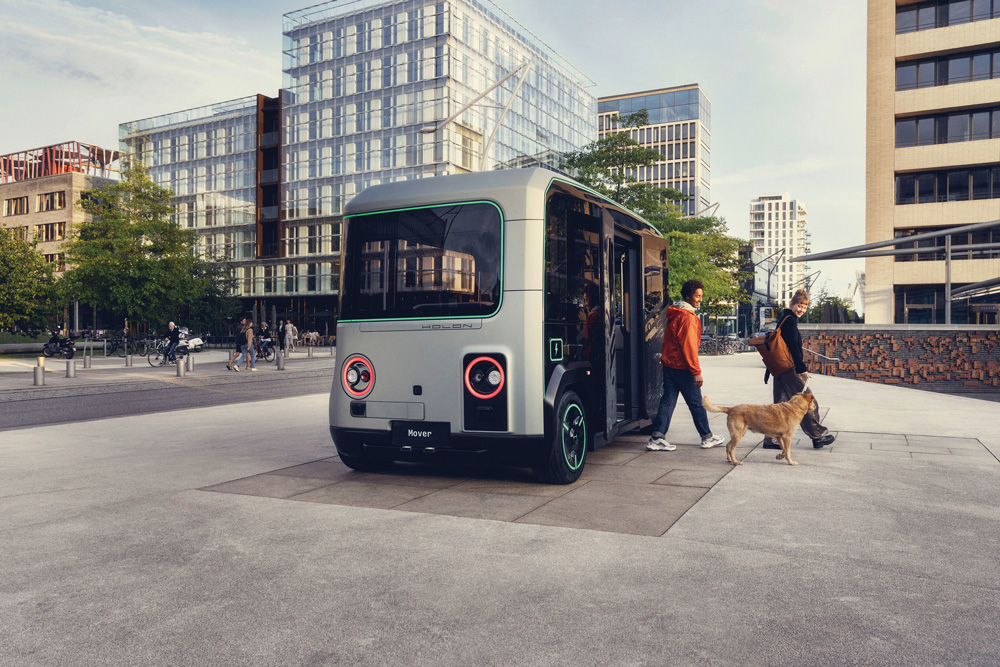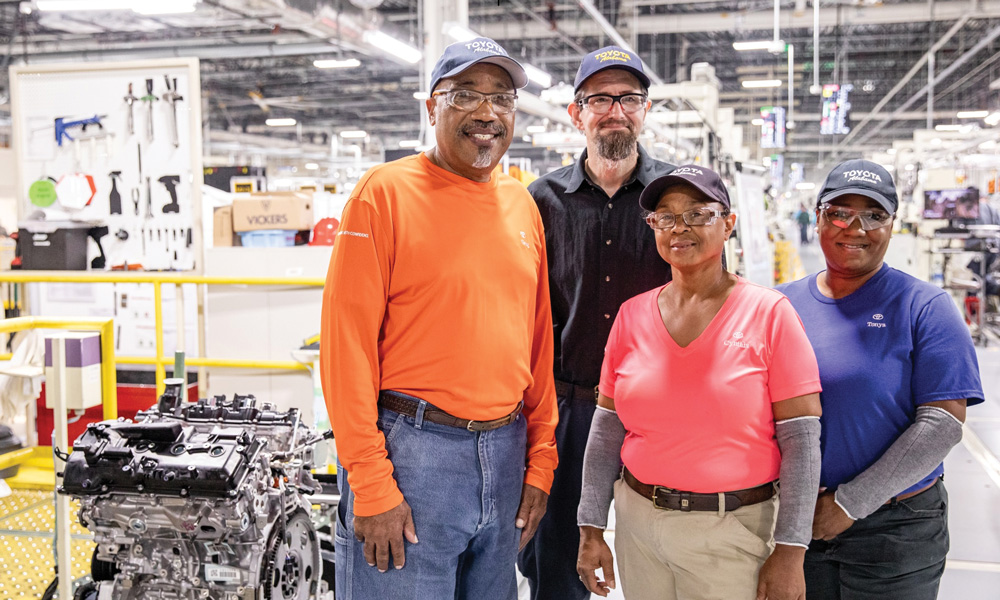Southern states score massive wins in foreign direct investment.
For the 12th consecutive year, the United States is the world’s top destination for foreign direct investment. And with healthy population growth supplying a reliable base of workers, states in the South are leading the way in attracting FDI, with major foreign projects landing even in out of the way places such as Sumter, South Carolina; Metter, Georgia; and Linwood, North Carolina. The pattern holds true across multiple industries — from automotive to life sciences, electronics to aerospace, metals to food & beverage.
“Global companies are attracted by the same forces as Americans,” says John Boyd, Jr., principal of the Boyd Company, the Boca Raton, Florida–based site consultancy. “If you poll most job creators, you tend to get a response that they feel more welcome in high-growth, pro-business states in the South.”
While America’s top ranking is derived from the 2024 FDI Confidence Index® by Kearney, the global management consulting firm, the strong performance of states in the southern U.S. emerged through an analysis of qualifying investments drawn from Site Selection’s Conway Projects Database. An outsized proportion of major capex outlays announced or completed over the past 12 months by companies based in South Korea, Germany, Japan, France, Switzerland, the Netherlands, the UK and Canada — America’s traditional top foreign investors — went to locations in 11 states in the South.

Germany’s HOLON is investing $100 million to make autonomous shuttles in Jacksonville, Florida.
Rendering courtesy of HOLON
“If a foreign company is looking to do business in the United States, generally I’m competing with states from the Carolinas and Tennessee, Alabama and Texas,” says Pat Wilson, commissioner of the Georgia Department of Economic Development (GDEcD). “From what I see on a day-to-day basis, the South has done very well in creating an environment by which these companies can be successful in the long run, and that reputation spreads.”
The reasons for that are many, according to officials and experts who spoke for this article, some factors familiar and others that might surprise.
“Bear in mind,” says Boyd, “the art of economic development was really created in the Southeast — as a way to lure industry away from the Northeast and from the Rust Belt.”
Tarheel Triumphs
North Carolina, with eight qualifying FDI projects, led the way among states in the South. Given the gravitational pull of the state’s Research Triangle, it’s no surprise that the life sciences sector figured prominently among North Carolina’s biggest wins.
In June, Kyowa Kirin, a specialty pharmaceutical company based in Japan, announced plans to invest up to $530 million to build a biologics plant in Sanford. The 172,000-sq.-ft., two-reactor facility, the company said in a statement, will accelerate development and production of therapies for patients with rare and serious diseases.
“The extraordinary complexity of the medicines we manufacture requires specialized skills and resources that are in plentiful supply in Sanford and the Research Triangle Region,” said Paul Testa, executive vice president and regional head of North America/EMEA Manufacturing for Kyowa Kirin North America.

Each April, Augusta National Golf Club hosts The Masters golf tournament, referred to by one site consultant as “the gold standard of all red-carpet tours” for potential investors in Georgia.
Getty Images
Scheduled to open in 2027 at Sanford’s Helix Innovation Park at the Brickyard, the facility will be supported by performance-based state and local incentives totaling $10 million over 12 years. The plant is projected to create more than 100 new jobs at an average salary of $91,496.
Japan, according to the office of North Carolina Gov. Roy Cooper, accounts for nearly half of North Carolina’s foreign direct investment over the past decade. Nipro (life sciences), Morinaga (food & beverage) and Dai Nippon Printing (chemicals) are among Japanese companies that have made nine-figure investments in North Carolina over the past year.
Japan accounts for nearly half of North Carolina’s foreign direct investment over the past decade.
Keeping the Wheels Turning
Global automakers, Asian producers in particular, continue to find their sweet spot in the South.
In June, Toyota announced a $282 million investment in its Huntsville, Alabama, engine plant, raising total investment in the facility inaugurated in 2003 to more than $1.7 billion. Toyota plans to hire more than 350 new workers. Huntsville’s Mazda-Toyota partnership has made investments exceeding $2 billion since its launch in 2018. South Korea’s ILJIN, which makes industrial bearings and chassis, is investing nearly $100 million in a new operation that’s bringing 160 jobs to Auburn.
In Kentucky, Toyota announced plans in February to pump $1.3 billion into its Georgetown plant for EV production, pushing investment in the facility to nearly $10 billion since 1988. In July, Mitsubishi Electric US announced a $143.5 million investment that’s to create 122 new jobs at its plant in Maysville.
“By country of the foreign parent, four countries accounted for half of the total foreign direct investment in the United States position at the end of 2023. The Netherlands was the top investing country with a position of $717.5 billion, followed by Japan ($688.1 billion), Canada ($671.6 billion) and the United Kingdom ($630.1 billion).”
— U.S. Bureau of Economic Analysis, July 2024
Less than two years since breaking ground on its sprawling, $7.6 billion “Metaplant” west of Savannah, Georgia, South Korea’s Hyundai has begun to produce electric SUVs that are expected to arrive at U.S. dealerships by the end of the year.
“According to Hyundai,” says GDEcD’s Wilson, “it’s the fastest they’ve ever built a plant anywhere in the world.”
Manufacturers like Hyundai, says Boyd, are drawn to the South by prevalent “right to work” laws — which serve to limit union participation — and also by the region’s leadership in workforce development programs.
“If you go back to the ’90s, when the textile industry left, these states were decimated and hungry to create jobs,” says Wilson. “Those programs go back to an overall push from leadership in the southern states that said that we have to be more competitive in making companies succeed here.”
Southern Accents
David Rumbarger, president and CEO of the Community Development Foundation in Tupelo, Mississippi, believes certain aspects of Southern culture play especially well with foreign investors.
In July, Switzerland’s Liebherr, one of the world’s largest manufacturers of construction equipment, announced plans for a $176 million distribution and manufacturing operation in surrounding Lee County.
“I have lived in the South for a long, long time,” Rumbarger tells Site Selection, “and Southern hospitality that extends not only from a site visit, but accommodating workforce needs, accommodating company needs and understanding how to client-service goes a long way toward making things happen.”
And he’s serious when he talks about Elvis.
“He’s my trump card,” Rumbarger says. “He was born here in Tupelo, and he is internationally known. He is a great introduction to any discussion about Americana and what America is like. He really allows us a platform to speak from.”
Wilson says Southern hospitality isn’t some tired bromide, but “really is a thing” that works to his advantage. So are regional markers that resonate globally: Think Southern music, NASCAR and SEC football. Plus, Georgia boasts its own “Elvis” in The Masters Tournament — “the gold standard of all red-carpet tours,” says Boyd — which draws throngs of well-heeled international prospects to the state each spring.
“There’s nothing like it in the world,” says Wilson. “Dating back to the ’60s, we’ve been able to bring in companies from around the world and host them. It’s paid off,” he says, “in billions and billions of dollars and tens of thousands of jobs.”

